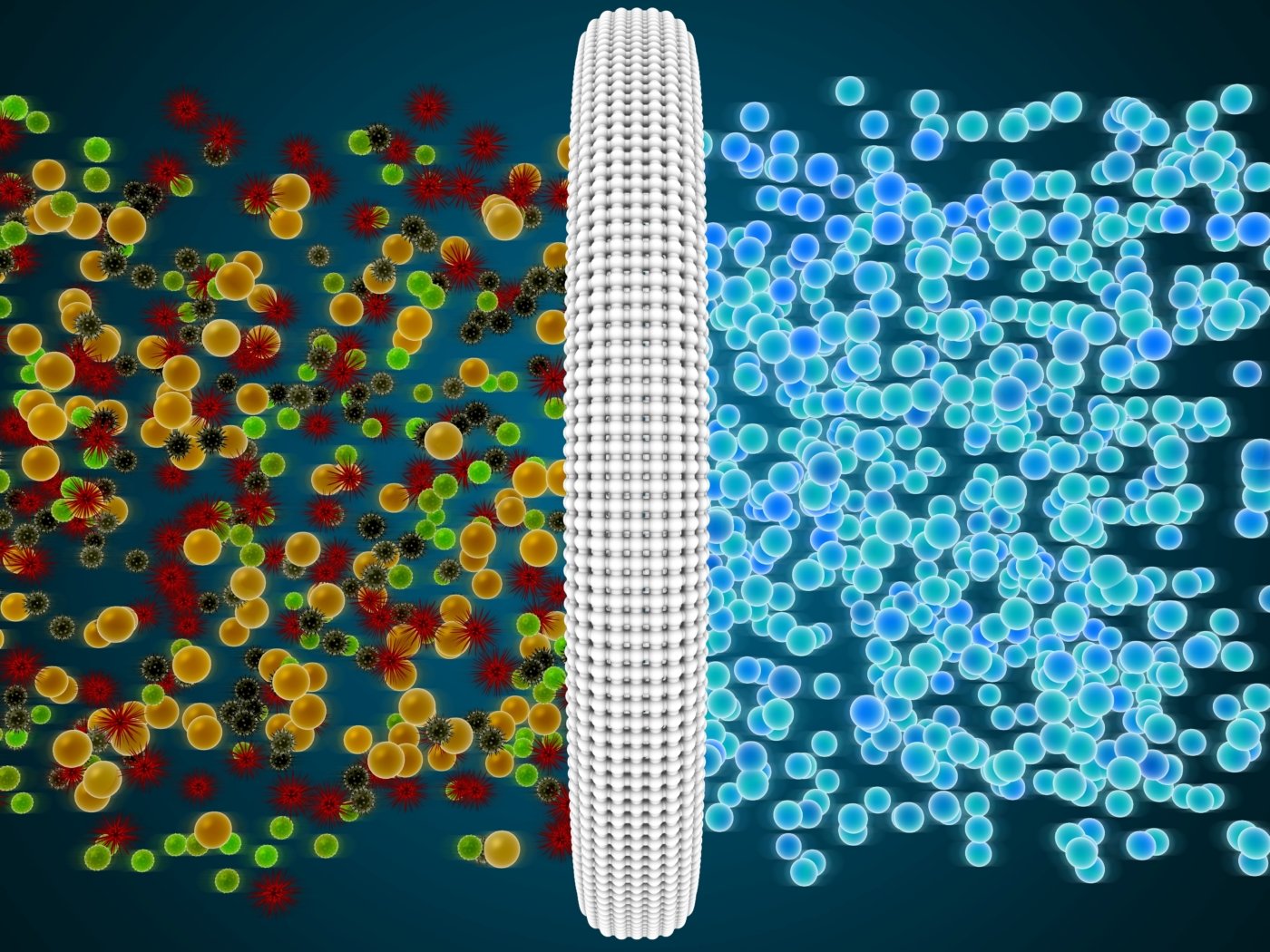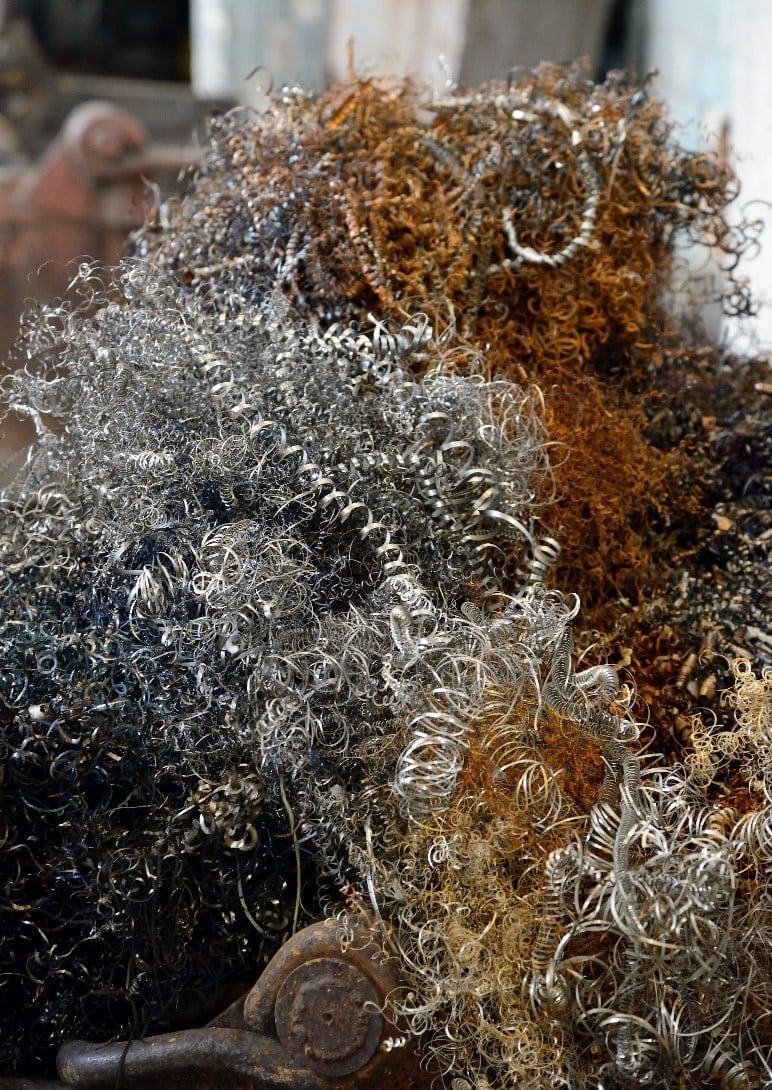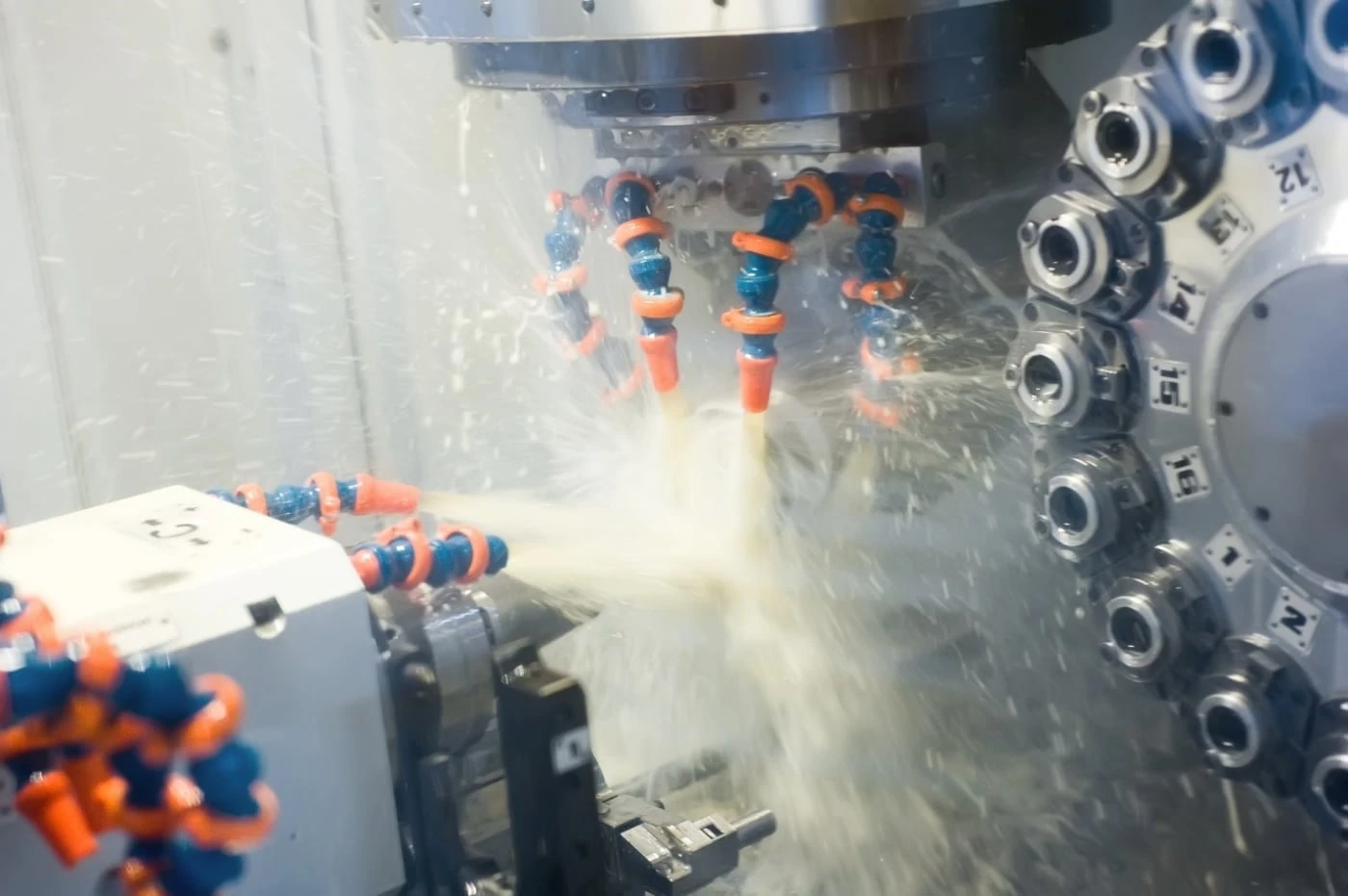Green Manufacturing: Lasting Environment & Shop Benefits
“Green Manufacturing” has become a common phrase used by many in America’s largest industry. It is defined by Goodwin College as “the renewal of production processes and the establishment of environmentally friendly operations within the manufacturing field.” Taking the time to rethink dated processes can save you time, money, and help build your reputation as a state-of-the-art business. The establishment of environmentally friendly machining processes is a huge leap in the right direction of creating an eco-friendly business.

Green Manufacturing is the next logical step forward for the industry.
How to Get Started With Green Manufacturing
The first step you should take on your march toward a more sustainable machine shop, and green manufacturing, is an evaluation of your facilities environmental impact. The most common method for environmental impact assessment of the manufacturing process is Life Cycle Assessment or LCA. ISO 14040 defines LCA as the compilation and evaluation of the inputs, outputs, and the potential environmental impacts of a product system throughout its life cycle.
4 Questions to Ask Yourself:
- Goal Definition and Scoping – What am I trying to achieve in this investigation?
- Inventory Analysis – What are the quantified inputs (energy, water, materials, etc.) and outputs (air emission, wastewater)?
- Impact Assessment – How do these things affect the environment?
- Interpretation – What can I change to make my processes more efficient and eco-friendly?
There are databases available to help with the inventory analysis. These databases collect information such as feed rate, cutting speed, tool diameter, cutting time, coolant properties, and then calculate all the material, and energy inputs and outputs.
Understanding the Impact of Cutting Fluids
Cutting fluids are most likely the number one pollutant in your machine shop, and are getting in your way of achieving green manufacturing. According to Modern Manufacturing Processes, North American manufacturers consumed more than 2 billion gallons in 2002, and the metal working fluid market has only grown since then. Cutting fluids have a number of benefits to the machining process, mostly involving cooling of the cutting region, lubrication, and chip evacuation.
Contaminants
Getting the most out of your coolant is a key factor of cost efficiency in any machine shop. Therefore, one of the largest problems you are likely to face, or are currently facing, is the deterioration of cutting fluid performance due to contaminants. The most common types of contaminants include:
- Free oils (tramp or sump oil) – Liquid that lubricates the gears and equipment of CNC machine seeping into the cutting fluid
- Coarse Particulates – Relatively larger solid waste, chips, and swarf
- Fine Particulates – Extremely small pieces of the workpiece or cutting tool that usually consist of heavy metals such as cobalt, cadmium, chromium, aluminum, and lead
- Microorganisms – Bacteria and fungi that grow inside the walls and pipes of the CNC machine
Coarse particulates such as chips and swarf are generally easily extracted using an H-Chain, chain and flight, push bar, or a flume system. Fine particulates are more difficult as they require either separation or filtration in the form of setting tanks, foam separators, centrifugal separation, or magnetic separators. Free oil can also be removed through filtration but can also be taken care of quickly and easily with a skimmer.

The right filtration system can both save machine shops money and help the environment.
Microorganisms are the most difficult to remove as they can be a tenth of the size of fine particulates. “Monday morning stink” is a common side effect of anaerobic bacteria excreting hydrogen sulfide during their metabolic processes. These organisms are one of the main reasons coolant has to be drained and changed from a machine every few months. Advancements in technology over the past few decades have made it possible for membrane microfiltration systems to separate biomass, as well as oil from coolant fluids. With these types of systems, operators will no longer have to use problematic biocides as these have troublesome health effects for both the environment and employees. However, it is important to note that most of the microorganisms aren’t growing in the cutting fluid but on the walls/pipes of the machine or buried in the residue of chips at the bottom of the tank.
Some ways of reducing microorganism build-up in your shop include:
- Keeping machines clean – sludge, swarf, and chips can be a breeding ground for bacteria
- Reduce organic contamination – spit, sweat, tobacco juice, and organic matter are all a food source for microorganisms
- Reduce the amount of tramp oil – This can also be a food source

A dirty pile of chips where bacteria will grow and stink up your machine.
Types of Cutting Fluids
A good cutting fluid should have a high flash point, good adhesiveness, high thermal stability, and high oxidative stability. A high flash point is necessary as the fluid should not catch fire at high temperatures (gasoline has a low flash point). Good adhesiveness allows fluid to stick to the surface of the workpiece. This creates a layer between the cutting tool and the workpiece, helping to separate them and thus, reducing friction. Greater amounts of friction leads to higher cutting force, which leads to higher cutting temperatures.
High cutting temperatures are problematic, as this causes the cutting tool to wear faster and can also cause your workpiece to workharden. High thermal stability means that at high temperatures, the fluid should have a low viscosity (an example of a fluid with high viscosity would be honey at room temperature). A lower viscosity in the cutting region allows for a lower amount of friction, and therefore lower amounts of heat and cutting force. A cutting fluids oxidative stability ultimately decides how long that cutting fluid can be used. After a while, oil begin to oxidize, which then causes its viscosity and amount of deposits of sludge to rise.

Excessive amounts of coolants can mean an excessive amount of waste.
For the purpose of this article, cutting fluids will be placed into two broad categories: biodegradable and non-biodegradable.
Non-Biodegradable Coolants
Non-biodegradable coolants are petroleum-based. They have high human and ecological toxicity, which results in occupational health risks. They also have a complicated disposal processes.
Biodegradable Coolants
Biodegradable coolants are plant-based. These are usually manufactured from vegetables such as soy, coconut and canola, or non-edible plants such as neem, karanja, and jatropha. This factor makes them a renewable resource and less toxic to humans, as well as the environment.
In recent years, some modified vegetable-based oils have surpassed petroleum based oils in performance in regards to surface finish, heat suppression and lubrication. One study, published in Science Direct, centered on turning in 304 stainless steel revealed that coconut oil with a boric acid additive was significantly better at combating tool flank wear and surface roughness when compared to two other cutting fluids. This was due to the vegetable-based solutions high thermal stability.
Another study, published in IOP Science, found that a combination of neem and karanja oil was superior to SAE 20W40 (petroleum based oil) in regards to lubrication when drilling mild steel. The results showed that the vegetable-based oil solution reduced the cutting force of the operation due to its higher viscosity and adhesiveness. This ultimately led to a better surface finish on the part.
Summary of Cost Efficient Coolant Changes You Can Make
- Reduce microorganism build up in your machines by keeping the machines clean and reducing amount of outside contamination
- Install a membrane microfiltration system
- Switch to a more efficient and biodegradable cutting fluid
The Positive Green Machining Impact of Dry Machining
Dry machining should be utilized whenever the opportunity presents itself, as the costs and environmental issues associated with cutting fluid obtainment, management, and disposal are eliminated. Another benefit to dry machining is the absence of thermal shock. When the cutter exits the cut but coolant is still blasting, the large temperature fluctuation (thermal shock) will cause the cutting edge to break down quicker than if it were to run hot full time. Dry machining is most prevalent in machining operations with interrupted cuts or when cutting hardened steels. It is especially popular in milling operations with high speeds and feeds. Cutting with high running parameters allows for most of the heat to be dispersed into the chips rather than into the workpiece. This is also the case when machining hardened steels.
Ideal Tooling for Dry Machining
The ideal cutting tool should be more heat resistant, and less heat generative. Carbide is a good substrate as it is extremely hard and strong. Coated tools are the best option for dry machining as they have improved thermal insulation as well as improved self-lubrication.
The Positive Affect of Minimum Quantity Lubrication (MQL)
- Significantly reduced fluid consumption
- Safer cutting fluids and lubricants
- Reduced health hazards for employees
- Cleaner shop environment
- Reduced maintenance
Because such a small quantity of fluid is used in MQL, this make it a perfect application to use slightly pricier vegetable-based oils. MQL has been found to be most effective in sawing and drilling operations.
The Benefits of Green Manufacturing
Taking a second look at your current machining operations through and environmentalist lens can save you time, money, and create a less hazardous work place for your employees. Using the techniques above, one can approximate shop efficiency and make appropriate changes for the benefit of current and future generations.


After I originally left a comment I appear to have clicked
on the -Notify me when new comments are added- checkbox
and now whenever a comment is added I get four
emails with the exact same comment. Is there a means you
can remove me from that service? Many thanks!
We will contact our website team to see if we can have this removed.
I would love to buy from a machine shop that evaluates its impact on the environment and then makes changes. A ton of companies overlook this and just work for money. However, its companies that try to be as green as possible that really make the money in my opinion.